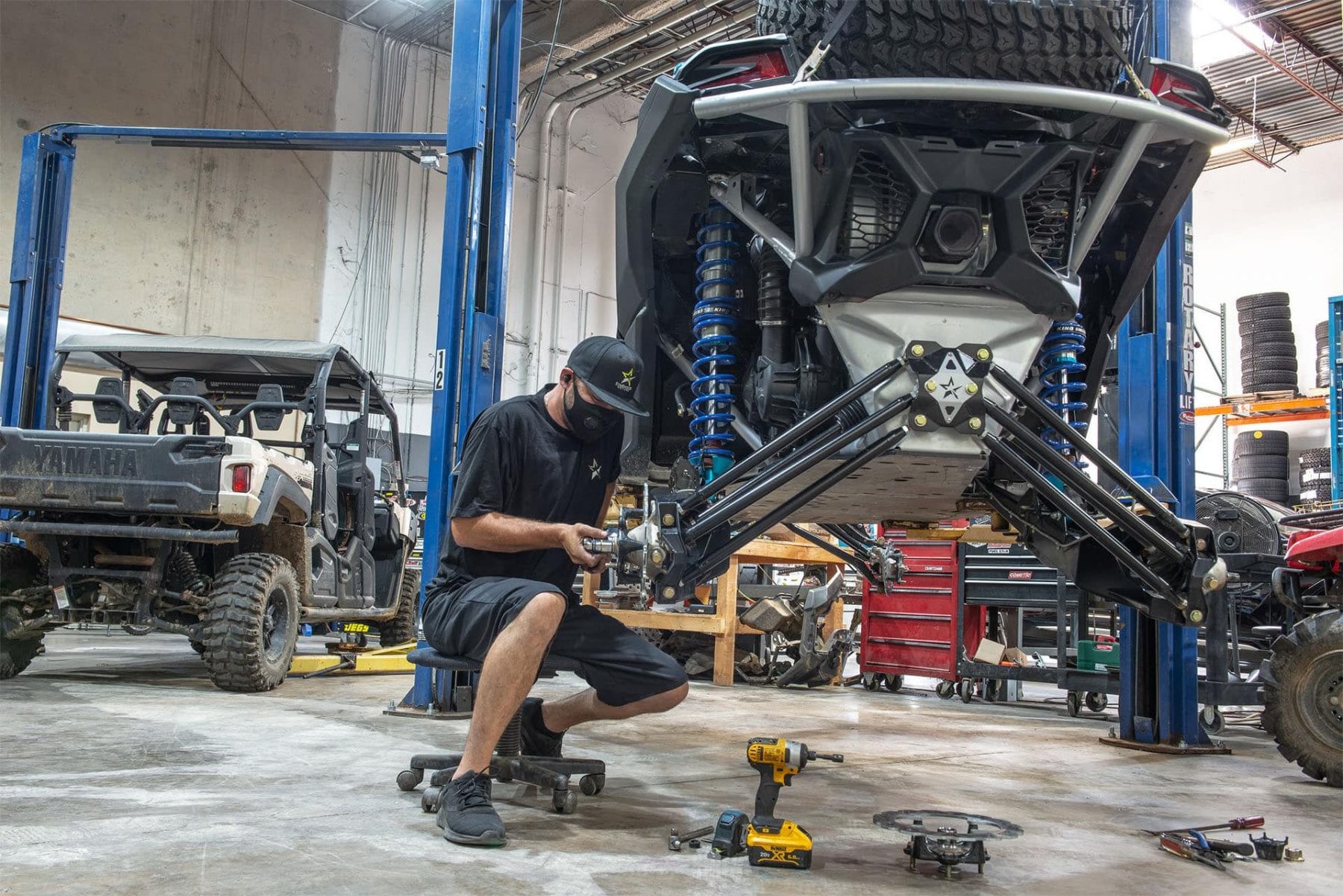ATV Mastery: A Comprehensive Overview to Off-Road Supremacy
ATV Mastery: A Comprehensive Overview to Off-Road Supremacy
Blog Article
ATV Riding Strategies: Grasping the Art of Off-Roading

Body Positioning
To properly navigate via challenging off-road terrain, it is crucial for ATV bikers to regularly preserve correct body placing. Preserving the correct body setting while riding an ATV not only boosts control and security however also ensures the biker's safety. By taking on the proper body positioning techniques, cyclists can effectively distribute their weight, boost their equilibrium, and decrease the threat of injuries or crashes.
One secret aspect of appropriate body placing is maintaining the feet on the foot pegs. Positioning the feet on the foot fixes allows the motorcyclist to preserve stability and control over the ATV. The motorcyclist's knees need to be a little curved, supplying a small suspension to keep and soak up shocks balance. In addition, the rider's upper body ought to stay loosened up and adaptable, permitting quick and seamless activities when required. This consists of maintaining a light grasp on the handlebars to maintain control without too much force.
Furthermore, the motorcyclist's eyes ought to constantly be concentrated ahead, checking the terrain and preparing for any type of challenges or changes in the path. By maintaining an onward stare, motorcyclists can make instant choices and react appropriately to testing surface.
Throttle Control
Structure upon the relevance of proper body positioning for ATV riders, mastering throttle control is an important skill that enables riders to properly navigate through numerous off-road terrains. Throttle control refers to the capability to control the amount of power supplied to the ATV's engine. By comprehending just how to manipulate the throttle, motorcyclists can ensure a smooth and controlled velocity, enabling them to browse obstacles with accuracy.
Among the essential facets of throttle control is learning to regulate the throttle efficiently. Abrupt or jerky movements can create the ATV to lose grip or come to be unsteady, making it hard to preserve control. Instead, motorcyclists need to intend for calculated and steady throttle inputs, especially when traversing difficult surfaces. This technique allows the ATV to keep a consistent rate and supplies far better grip, minimizing the risk of crashes.
In enhancement to smooth inflection, cyclists have to additionally find out how to stabilize the throttle with other riding methods, such as body positioning and stopping. When climbing up steep hills, bikers require to use adequate throttle to maintain energy without creating or overpowering the atv wheel spin. When descending high inclines, bikers ought to use the throttle in combination with correct body placing and braking to keep control and stop the ATV from moving or tipping over.

Braking Methods
An essential aspect of ATV riding methods is understanding effective braking techniques. Knowing exactly how to brake appropriately can make a substantial distinction in your safety and security and control over the lorry when it comes to off-roading. Among one of the most crucial braking techniques is using the front brake more than the back brake. The front brake offers most of the stopping power, so it is important to utilize it carefully. It is important to remember that rough stopping with just the front brake can trigger the ATV to pitch forward, potentially leading to loss of control or also turning over. Therefore, it is recommended to use both brakes all at once, yet with even more pressure on the front brake. One more important technique is to avoid securing the wheels while stopping. Locking the wheels can cause skidding, making it hard to preserve control. To avoid this, squeeze the brake bars progressively and release them a little if you really feel the wheels locking. By grasping these braking techniques, you can boost your ATV riding skills and ensure a delightful and secure off-roading experience.
Cornering Strategies
One important aspect of understanding ATV riding techniques is comprehending reliable cornering techniques. Collaring on an ATV basics can be challenging, yet with the best strategies, bikers can browse turns securely and efficiently. The secret to effective cornering is to maintain control of the ATV while making the most of grip and decreasing the risk of tipping over.
To carry out a proper cornering method, cyclists should approach the turn at a proper rate, guaranteeing they are not going too slow-moving or too rapid. It is essential to move the body weight in the direction of the within of the turn, leaning right into it to maintain balance and security. This helps for the centrifugal pressure and maintains the ATV upright.
Additionally, riders ought to maintain their eyes focused on the exit point of the turn as opposed to the immediate path ahead (ATV). This permits smoother and a lot more exact guiding, as it assists the motorcyclist prepare for any kind of challenges or changes in terrain
Additionally, appropriate throttle control plays a considerable function in cornering. Bikers need to regulate the throttle efficiently, preventing unexpected accelerations or decelerations, which can click for source cause loss of control.
Uphill and Downhill Riding
When browsing off-road surface, ATV bikers need to understand the methods for uphill and downhill riding to keep control and guarantee security. Downhill riding, on the various other hand, requires bikers to lean back and move their weight in the direction of the back of the ATV. By mastering the techniques for uphill and downhill riding, ATV motorcyclists can with confidence take on various off-road terrains and appreciate a safe and exciting journey.
Verdict
In verdict, grasping the art of ATV riding calls for a combination of body positioning, throttle control, braking techniques, and efficient cornering. Uphill and downhill riding likewise require particular skills to browse safely. By executing these methods, riders can improve their off-roading experience and enhance their overall control and safety on the ATV.
ATV Riding Techniques: Mastering the Art of Off-Roading is a detailed guide that digs right into the complexities of mastering the skills needed for off-road ATV riding. Whether you are a newbie or an experienced rider, ATV Riding Techniques: Understanding the Art of Off-Roading provides indispensable advice to aid boost your off-road ATV riding abilities to the next degree.

Report this page